The Visual Culture of Working Class Cities
The study of visual culture acknowledges the reality of living with culturally meaningful visual content that appears in multiple forms. This is especially true in cities.
Geno’s Steaks (above) is a restaurant founded in 1966 by Joey Vento. It is considered a Philly icon and represents the working class Italian culture of South Philadelphia. All of the tourists stop there for a Philly cheese steak and to soak in a working class establishment. South Philly Italians are credited with inventing the cheesesteak. What many visitors do not know is that Philadelphia has different styles of cheesesteaks depending on what neighborhood one visits.
The working class have always been innovative, hard working and full of pride. During the Industrial Revolution in 18th century, manufacturing jobs were everywhere which provided a rising standard of living for the working class. The population in port cities like Boston, New York City, Philadelphia and Baltimore exploded with growth. In the early 20th century, deadly work-related accidents, union protests and federal labor laws helped birth better working conditions. In 1938, Congress passed the Fair Labor Standards Act and the 5 days/40 hour workweek was born.
The working class are the unsung backbone of The United States having built most of the urban iron and cement fantastical structures in the 20th century such as bridges, skyscrapers, public works, etc. There is a plaque on the walkway of the Ben Franklin Bridge in Philadelphia that reads: “In memory of those who lost their lives in the building of this bridge.” Typically, these were dangerous working class jobs.
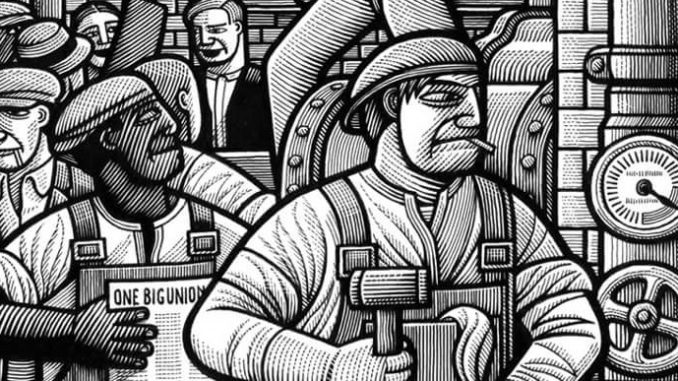
Monumental changes in technology and laws also delivered something else: Expanded leisure time.
Weekends became increasingly viewed as a time of relaxation, recreation and spiritual reflection. Blue Laws were instituted to promote the observance of a day of worship, rest and to restrict shopping. In Pennsylvania, playing professional sports was illegal until 1931. As states struck down their blue laws, consumer spending increased.
The Working Class
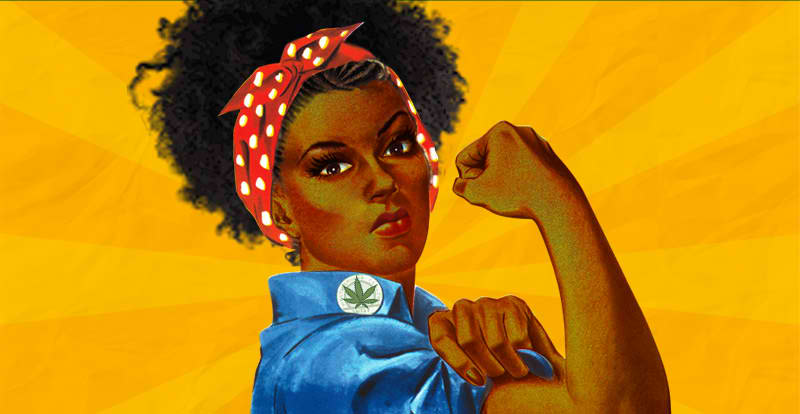
According to a Gallup Poll, almost one third (31%) of Americans identify as working class. (I know that Rosie the riveter is White but the pict above is simply to acknowledge that the majority of females, especially Black women, are working class.)
According to americanprogressaction.org, the definition of working class is members of the labor force with less than a four-year college degree. (According to this website, their definition is education-based since this is more stable across one’s lifetime than is income or occupation.)
The poor and working class were a significant portion of this country during its rapid growth periods. But with more technological advances and friendly immigration policies, the working class became more mobile as competition increased from arriving immigrants. As life improved after World War II, more affordable consumer products flooded the market promoted through television.
Working Class Cities
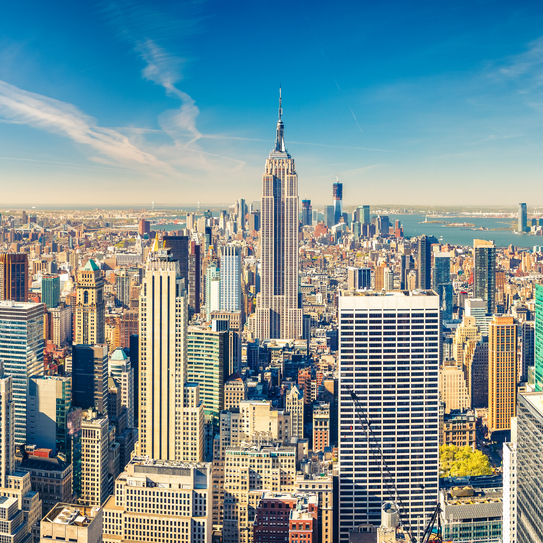 Lewis Mumford’s definition of the city is all encompassing: The city in its complete sense, then, is a geographic plexus, an economic organization, an institutional process, a theater of social action and the aesthetic symbol of collective unity. This holistic description indicates a certain dynamism that is inherent in healthy city structures, always changing and rarely stagnant.
Lewis Mumford’s definition of the city is all encompassing: The city in its complete sense, then, is a geographic plexus, an economic organization, an institutional process, a theater of social action and the aesthetic symbol of collective unity. This holistic description indicates a certain dynamism that is inherent in healthy city structures, always changing and rarely stagnant.
Many of America’s Rust Belt cities are dominated by working class populations: New York, Boston, Philadelphia, Baltimore, Chicago, etc. Other smaller cities include Pittsburgh, Cleveland and Milwaukee. Although these cities have distinct cultures, as I have visited them, all have felt eerily similar and familiar.
The prosperity of cities and the growth of leisure time has led to the rise of the cultural industries, cultural production and the cultural economy.
The terms above come from David Hesmondhalgh’s book, The Cultural Industries, 3rd Edition on pages 16-18 and 54-58. He is Professor of Media, Music and Culture in the School of Media and Communication at the University of Leeds.
Cultural Industries: Institutions (profit making, nonprofit and state) that are directly involved in the production of social meaning through mediums (print, electronic and digital including audio). The primary aim is to communicate to an audience.
Cultural Production: The reciprocal relationships between cultural industries and broader currents of culture within society.
Cultural Economy: An economic perspective on the cultural industries.
Here are five common elements expressed through visual culture in working class cities:
Race
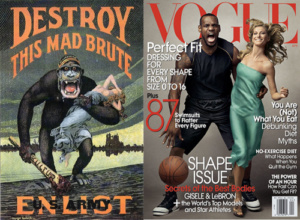 Ethnic identification provides a foundational basis for identity for the working class and a connection to their ancestral homelands. A native language (spoken or written) helped others identify a peron’s nationality. Dress can sometimes be used in the same way.
Ethnic identification provides a foundational basis for identity for the working class and a connection to their ancestral homelands. A native language (spoken or written) helped others identify a peron’s nationality. Dress can sometimes be used in the same way.
Although race is a social construct, politicians, business and civic leaders successfully used it to classify and ferment class conflict in the early 20th century. Race riots were common in working class cities and usually were sparked by employment and housing issues.
Emerging cultural industries utilized racial stereotypes as entertainment through minstrel shows and vaudeville acts in the early 20th century. Although these racial generalizations have dissipated over time, they still lie beneath the surface in American culture. For example, it is widely known that professional sports analysts and journalists often describe African American athletic achievement differently compared to White athletes.
Question: How are Black athletes depicted visually in the media compared to White athletes?
Neighborhoods
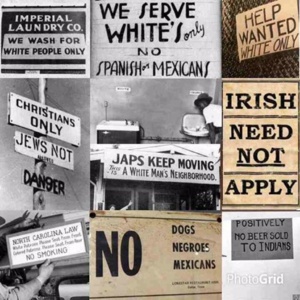 Community boundaries were often defined by race and in some cities, they still are. Past ethnic clashes and mobility have shaped the history of many city neighborhoods.
Community boundaries were often defined by race and in some cities, they still are. Past ethnic clashes and mobility have shaped the history of many city neighborhoods.
Ethnic visual markers can be seen in business names, use of color, type of food/drink and symbols. For example, Black barbershops frequently use Ebonics and Black slang for their business titles. The barbershop I used as a kid was called Stan the Man’s Barbershop.
According to masslive.com, Boston is the nation’s seventh most racially segregated city. But ironically, idealism reigns in print and TV ads. Communities are depicted as diverse and inclusive.
Question: Although many metro areas have diverse populations, they are still very segregated. What does this tell us about people?
Sports/Competition
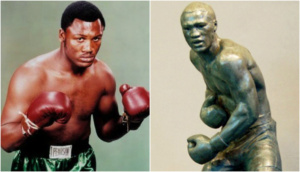 The working class like professional sports stress workplace ideals: team work, skill improvement, physical strength and endurance. The fanaticism around professional football is very evident in working class cities. Fans will often wear the jersey of NFL players who may reflect their ethnicity and culture. Rags to riches stories are preferred like Joe DiMaggio. He was born in 1914 to Italian working class immigrants and played for the New York Yankees for 13 seasons.
The working class like professional sports stress workplace ideals: team work, skill improvement, physical strength and endurance. The fanaticism around professional football is very evident in working class cities. Fans will often wear the jersey of NFL players who may reflect their ethnicity and culture. Rags to riches stories are preferred like Joe DiMaggio. He was born in 1914 to Italian working class immigrants and played for the New York Yankees for 13 seasons.
Rocky Balboa is a fictional Italian working class heavyweight boxer in the 1976 Rocky movie. The film franchise boosted tourism in Philadelphia encouraging visitors to run up the Art Museum steps and take pictures with his statue at that same location. However, when the first Rocky movie was released, the last white heavyweight boxing champion was Rocky Marciano who held the title in 1956.
Question: Joe Frazier (1944-2011) was the world heavyweight champion (above) from 1970 to 1973. He is African American and beat Muhammad Ali. His statue was unveiled in South Philadelphia in 2018. Why was a statue of a white fictional Philly champion boxer erected in 1980 before an actual Philly champion boxer?
Fraternal Associations
 These clubs can include social, ethnic/cultural, trade, military/law enforcement, economic, religious and/or education interests. According to this website, males belong to fraternal organizations at a rate of nearly twice that of women (65.1 percent to 34.9 percent).
These clubs can include social, ethnic/cultural, trade, military/law enforcement, economic, religious and/or education interests. According to this website, males belong to fraternal organizations at a rate of nearly twice that of women (65.1 percent to 34.9 percent).
These groups provide brotherhood, support and common purpose for men using symbols and sometimes secretive rituals. As a kid, I would see symbols on the back of cars. I found out later that they were freemason symbols. Prince Hall Freemasonry is a branch of North American Freemasonry for African Americans founded by Prince Hall in 1784.
Although male fraternal organizations are declining, lately, the news has often depicted them as dangerous, sexist and corrupt.
Question: The most dangerous jobs in our society are performed by males. Why?
Cultural Celebrations
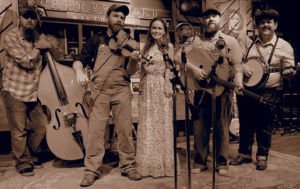
The working class believe in socializing and enjoying cultural expression. In the past, these kind of celebrations was viewed as low culture because it involved dancing, drinking and communal singing. Today, this view has somewhat disappeared as the non-Irish also celebrate St. Patricks Day and the Martin Luther King Day celebrations at schools are often a multicultural affair. In Philadelphia, the annual Odundee Festival draws a multiracial crowd to celebrate African, African American and Black Caribbean culture.
The people of Appalachia (above) often have been depicted in TV shows, cartoons and comedic skits as ingrown hillbillies. However, they significantly contributed to the development of old-time, country, bluegrass and folk music in the U.S.
Question: Why aren’t their contributions nationally celebrated?
What Does This All Mean?
Some of these elements have declined over the generations as people within ethnic groups move away from their ancestor’s land and values, become more middle class and affluent. (But part of this was obtained by European immigrants groups deciding to become ‘white’ in order to gain more opportunities in America. For example, the Irish, once they became ‘white’ were eventually able to avoid the discrimination that African Americans consistently faced on a regular basis.)
In spite of this decline, racial stereotypes are still alive and well because they have become a part of the cultural economy in cities.
But bigger changes have been initiated by technologies that continue to democratize communications. Digital natives are moving beyond urban/suburban/rural divides and are challenging established narratives.
Because of the internet, citizens can create images, amplify their own message and alter existing images created by the cultural industries. This has helped create fansites based around various fictionalized universes such as Star Trek, Star Wars, Marvel and DC. Online spaces have also helped those who feel marginalized, regardless of physical location, to find each other and form their own virtual groups. Their conversations on multiple platforms are finding their way into the mainstream such as cultural appropriation, reparations, climate change, identity, nationalism and sexuality.
Although there are working class audiences who are still interested in cultural expressions and messages that promote their culture in the physical world, the younger more affluent generation are spending more time in online spaces.
Question: Are the cultural expressions and messages experienced through working class visual culture in the physical world still relevant? Although digital natives can organize themselves, create images and messages a lot faster, does this have a downside?
What do you think?
